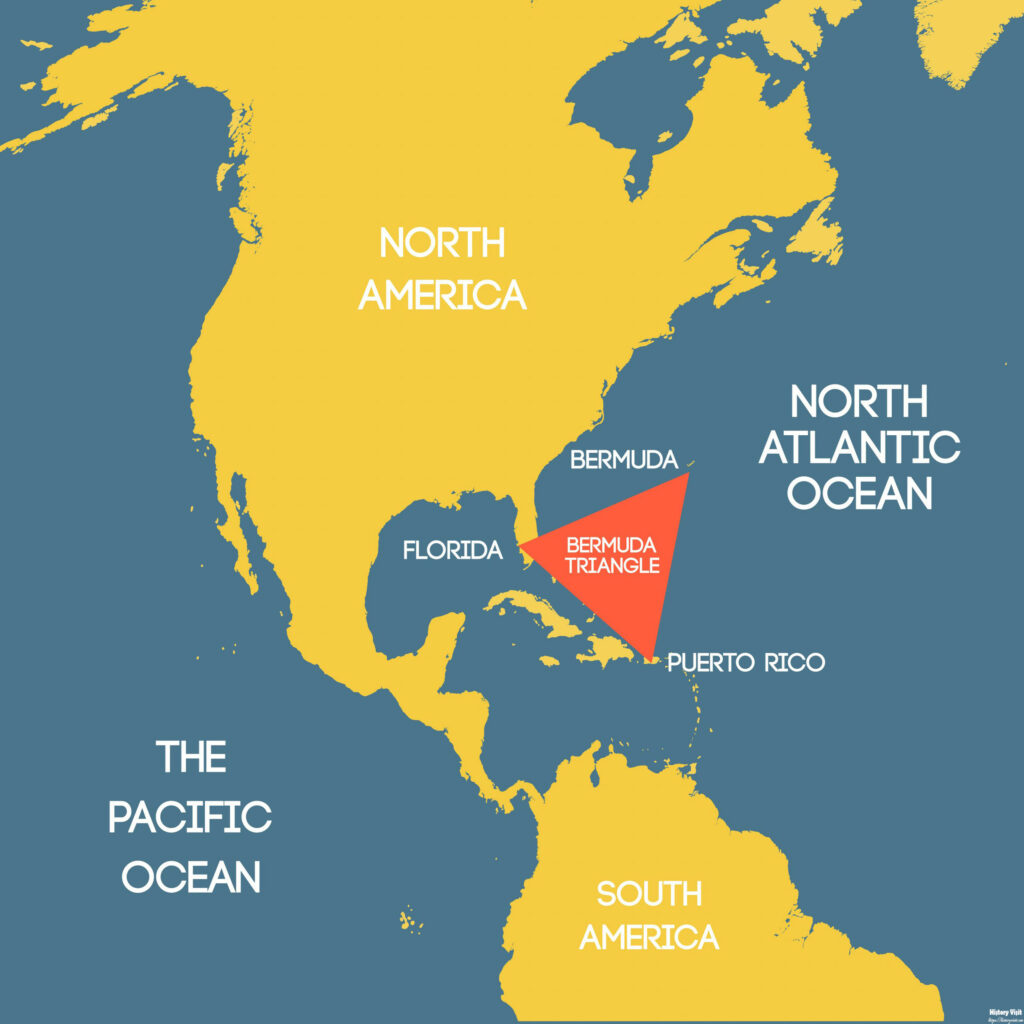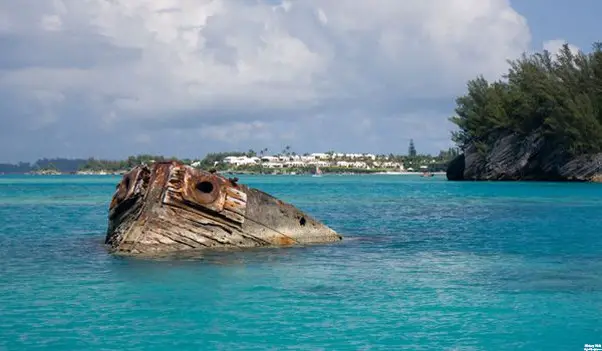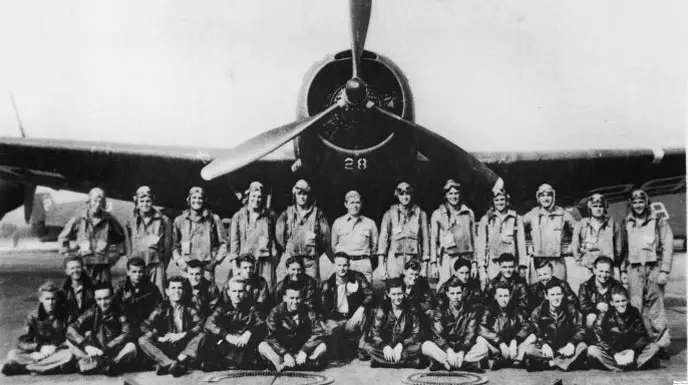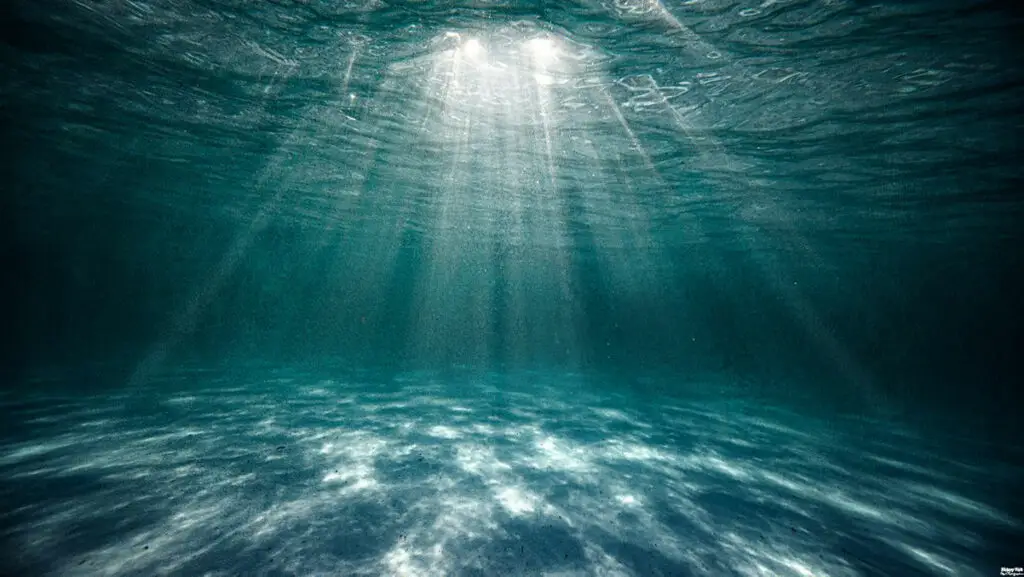The Bermuda Triangle: Unraveling the Mysteries of the Devil’s Triangle

Introduction
The Bermuda Triangle, often referred to as the Devil’s Triangle, has captivated the imagination of people around the world for decades. This region, loosely defined as the area between Miami, Bermuda, and Puerto Rico, has been the site of numerous mysterious disappearances of ships and aircraft. The allure of the Bermuda Triangle lies in its enigmatic nature and the numerous theories that attempt to explain the inexplicable events that have occurred there. From scientific explanations to supernatural hypotheses, the Bermuda Triangle remains one of the world’s most enduring mysteries.
The intrigue surrounding the Bermuda Triangle began to gain widespread attention in the 20th century, but stories and legends of strange occurrences in this region date back much further. Sailors and navigators have long reported unusual magnetic anomalies and unpredictable weather patterns in these waters. Over time, these stories have been amplified by the media, leading to a proliferation of books, articles, and documentaries dedicated to exploring and explaining the Bermuda Triangle mystery.
This article will delve into the historical background and notable incidents of the Bermuda Triangle, explore the various theories that attempt to explain its mysteries, and examine the impact of this enigma on popular culture. By understanding the history, theories, and cultural significance of the Bermuda Triangle, we can gain a deeper appreciation for this fascinating and mysterious region.
Geographical Boundaries

The Bermuda Triangle is not an officially recognized geographical designation, but it is commonly defined by the points of Miami, Florida; Bermuda; and San Juan, Puerto Rico. This triangular area covers roughly 500,000 square miles of ocean, encompassing a region known for its busy maritime and aviation routes. The boundaries of the Bermuda Triangle are not strictly delineated, which has led to some variability in its exact size and location in different accounts.
The significance of the Bermuda Triangle’s geographical boundaries lies in its position along key shipping and flight paths. The area is a major route for commercial shipping traffic between the Americas, Europe, and the Caribbean. Additionally, it is a heavily traveled region for both civilian and military aircraft. This high volume of traffic contributes to the number of incidents reported in the area, which has fueled the mystery surrounding the Bermuda Triangle.
The oceanography of the Bermuda Triangle is also notable for its unique features, including deep underwater trenches, strong ocean currents, and variable weather patterns. The Gulf Stream, a powerful Atlantic Ocean current, flows through the region, which can lead to rapidly changing weather conditions and potentially hazardous navigation conditions. These natural factors play a significant role in the various theories that attempt to explain the mysterious disappearances associated with the Bermuda Triangle.
Early Reports and Legends

The history of the Bermuda Triangle is steeped in maritime lore and legend. Reports of strange occurrences and unexplained disappearances in this region date back centuries, long before it became a modern-day mystery. Early explorers and sailors, including Christopher Columbus, documented unusual events while navigating these waters. Columbus noted strange compass readings and sightings of mysterious lights during his voyage through the area in 1492.
As maritime travel increased in the centuries that followed, so did reports of ships vanishing without a trace. These early incidents laid the groundwork for the Bermuda Triangle legend, contributing to its reputation as a perilous and enigmatic region. Stories of ghost ships, such as the infamous Mary Celeste, although not directly linked to the Bermuda Triangle, further fueled the sense of mystery and danger associated with these waters.
The 20th century saw a surge in reported incidents and growing public interest in the Bermuda Triangle. One of the most famous early cases was the disappearance of the USS Cyclops in 1918. The U.S. Navy ship vanished with 306 crew members on board while en route from Brazil to Baltimore, leaving no wreckage or evidence of its fate. This incident, along with others, helped cement the Bermuda Triangle’s reputation as a hotspot for inexplicable disappearances.
Notable Disappearances

The Bermuda Triangle has been the site of numerous notable disappearances that have captivated the public’s imagination. One of the most well-known cases is the disappearance of Flight 19, a group of five U.S. Navy Avenger torpedo bombers, in December 1945. During a routine training mission, the flight leader reported navigation problems and disorientation. Despite extensive search efforts, no trace of the aircraft or their crews was ever found. The disappearance of Flight 19 remains one of the most famous and mysterious incidents associated with the Bermuda Triangle.
Another significant incident is the loss of the SS Marine Sulphur Queen in February 1963. The tanker, carrying molten sulfur, vanished with its 39 crew members while sailing from Beaumont, Texas, to Norfolk, Virginia. Despite a large-scale search operation, the ship was never found, and only a few pieces of debris were recovered. The disappearance of the Marine Sulphur Queen added to the Bermuda Triangle’s lore of ships vanishing without a trace.
In more recent times, the Bermuda Triangle has continued to witness mysterious incidents. In 2015, the cargo ship El Faro sank during Hurricane Joaquin while sailing from Florida to Puerto Rico, resulting in the loss of all 33 crew members. Although the wreckage was eventually found, the circumstances leading to the disaster and the inability to rescue the crew added to the Bermuda Triangle’s mystique. These notable disappearances, among many others, contribute to the ongoing fascination and mystery surrounding this enigmatic region.
Media and Public Interest
The Bermuda Triangle’s mystery has been significantly amplified by media coverage and public interest. The term “Bermuda Triangle” was first coined by writer Vincent Gaddis in a 1964 article for Argosy magazine. Gaddis’s article, titled “The Deadly Bermuda Triangle,” brought widespread attention to the phenomenon and laid the groundwork for subsequent books and articles that explored the mystery in greater detail.
One of the most influential books on the subject is Charles Berlitz’s “The Bermuda Triangle,” published in 1974. Berlitz’s book became a bestseller and popularized many of the legends and theories associated with the region. The book’s success led to a proliferation of documentaries, television specials, and movies that further fueled public fascination with the Bermuda Triangle. These media portrayals often emphasized the more sensational and supernatural aspects of the mystery, contributing to its enduring allure.
Public interest in the Bermuda Triangle has also been driven by the mystery’s appeal as an unsolved enigma. The lack of definitive explanations for the numerous disappearances has allowed for a wide range of theories, from plausible scientific hypotheses to fantastical and supernatural ideas. This openness to interpretation has made the Bermuda Triangle a fertile ground for speculation and imagination, keeping the mystery alive in the public consciousness.
Skepticism and Debunking
Despite the widespread fascination with the Bermuda Triangle, many scientists and researchers have approached the mystery with skepticism. Numerous investigations have sought to debunk the more sensational claims and provide rational explanations for the disappearances. One common argument is that the number of incidents in the Bermuda Triangle is not significantly higher than in other heavily traveled regions of the world, and that many of the disappearances can be attributed to human error, equipment failure, and natural hazards.
Studies have also pointed to the role of environmental factors in the Bermuda Triangle. The region’s unique oceanographic and atmospheric conditions, including powerful currents, unpredictable weather, and methane hydrate gas eruptions, have been proposed as explanations for some of the disappearances. These natural phenomena can create hazardous conditions for ships and aircraft, leading to accidents and sinkings that may appear mysterious but have logical causes.
Furthermore, some researchers have questioned the accuracy and reliability of the reported incidents. Inconsistencies in the accounts, lack of verifiable evidence, and exaggerations by authors and media have contributed to the Bermuda Triangle’s mystique. By critically examining the facts and separating myth from reality, skeptics aim to demystify the Bermuda Triangle and provide more grounded explanations for the phenomena associated with the region.
Conclusion

The Bermuda Triangle, with its rich history and numerous unexplained incidents, continues to captivate the imagination of people around the world. From its early legends and notable disappearances to its portrayal in media and popular culture, the Bermuda Triangle remains an enduring mystery that invites speculation and intrigue. The combination of historical incidents, natural phenomena, and human error creates a complex tapestry of factors that contribute to the region’s enigmatic reputation.
Despite the many theories and investigations, the Bermuda Triangle retains its allure as an unsolved mystery. The enduring fascination with this region highlights humanity’s innate curiosity and desire to understand the unknown. While scientific investigations have provided plausible explanations for many of the incidents, the Bermuda Triangle still holds an air of mystery that continues to captivate and intrigue.
In conclusion, the Bermuda Triangle is a testament to the power of mystery and the human imagination. Whether viewed as a region of supernatural phenomena, a site of natural hazards, or a product of human error and media sensationalism, the Bermuda Triangle remains a compelling enigma. As long as there are unanswered questions and unexplained events, the mystery of the Bermuda Triangle will continue to inspire curiosity and wonder in those who seek to unravel its secrets.


